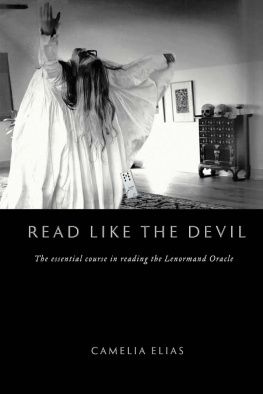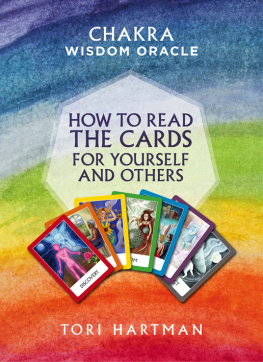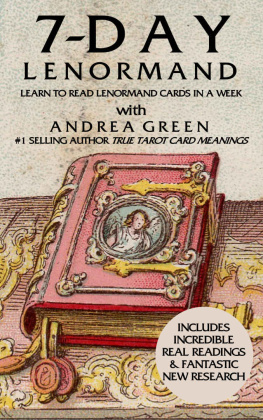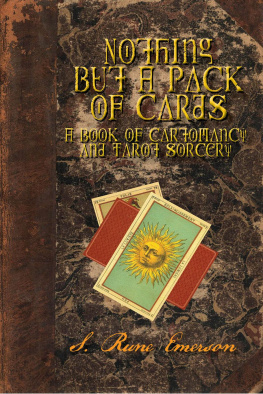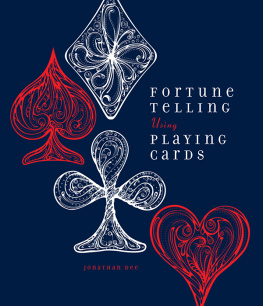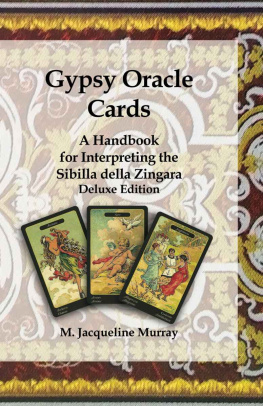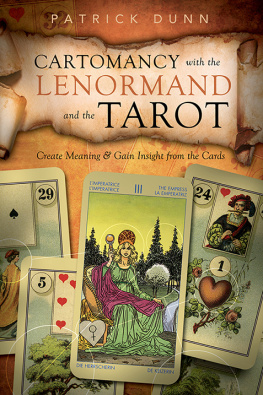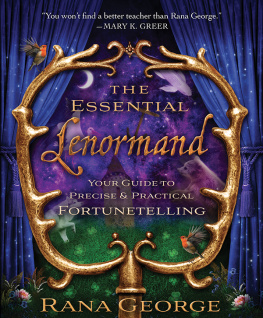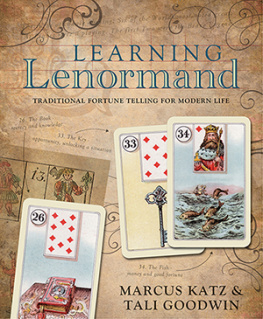

Read Like the Devil: The Essential Course in Reading the Lenormand Oracle
Camelia Elias 2021. Published by EyeCorner Press. Designed and typeset by Camelia Elias. Images: A Helium Poet Lenormand, second edition, by Camelia Elias.
ISBN: 978-87-92633-71-2
ISBN EBOOK: 978-87-92633-72-9
June 2021, Agger, Denmark
All rights reserved. No part of this book may be reproduced in any form, without written permission from the copyright holder.
WWW.EYECORNER.PRESS
Never again!
I needed to clean up my act,
get fitter,
cut out the booze and the fags and the sex.
Yes. And as for the latter,
it was time to turf out the blighter,
the beater or biter,
whod come like a lamb to the slaughter
to Salomes bed.
In the mirror, I saw my eyes glitter.
I flung back the sticky red sheets,
and there, like I said and aint life a bitch
was his head on a platter.
CAROL ANN DUFFY
from Salome in The Worlds Wife
CONTENTS
HEADS ROLLING
N ever mind the epigraph that sets the tone for this book, a fragment taken from Carol Ann Duffys ingenious poetry book, The Worlds Wife, a fragment in which we hear the Biblical Salomes voice talking about having taken John the Baptists head, almost as an accident, yet occasioned by habit. Id done it before Salome says at the beginning of the poem, then confidently asserting her fate and her future: and doubtless Ill do it again, sooner or later. This was not the tone in the 1800s when upper class bourgeois women would gather at salon parties, their gazes averting, yet donning their best crinoline dresses that would emphasize their waist, taking their breath too, for how else was one to suggest ones eagerness where the other sex was concerned than through being short of breath and on the sexy verge of swooning all the time? The form of their dances would be as uniform as the form of their thoughts: who among these men, sitting so close yet also so far in the next room, drinking cognac, smoking, and talking politics, will take me as their wife? How to settle this question? If chess was for men, board games were invented for these women. From frivolous play to serious fortunetelling.
When the Game of Hope (Das Spiel der Hoffnung) was first created in 1799 by Johan Kaspar Hechtel in Germany, the deck was popular with the women whose primary concern was marriage, the financial stability that marriage would bring, and the fortunes or misfortunes related to finding their intended. Certain social conditions had to be fulfilled in order for an advantageous union to occur, but one could also get lucky in case some points were missing from the check list. But how was one to know? The parlor fortune games got popular as they addressed such issues on the spot. If the women were already married, but found themselves dissatisfied, the cards would also provide remedies. If public scandals were on the horizon, with the intended seeking other women, the cards gave advice on the appropriate course of action that could prevent the disaster. All high tensions hard to think of. But even if thought of, no woman would speak out loud with Salomes daring. If a competent fortuneteller would become a trusted confidant instead, then oaths of secrets would be sworn.
The original genius of the fortunetelling cards consisted in embedding subtexts and silent contexts into the mundane imagery of the cards, so that the Ring next to the Fox would not only, for instance, announce a cunning partnership, but also the theft of marital vows, commitments that would require a second opinion, or resilient hunting in the name of mastering survival. Cards gave women a voice. In the cultural capital of Germanic haute bourgeoisie places, if the women consulting fortunetelling cards for love and prosperity or an impending doom would not adopt Salomes independence, they could at least speak like Medusa in Carol Ann Duffys rendition of yet another worlds wife invested in heads:
Be terrified.
Its you I love,
perfect man,
Greek God, my own;
but I know youll go,
betray me, stray
from home.
So better by far for
me if you were stone.
(Dufy, 1999: 40)
This is what we call oracular language. We use it every day. When Salome found the severed head of John the Baptist among her bloody sheets in the morning after her iconic dance, and exclaimed, aint life a bitch, she gave us the same implicit cadence in her deadpan recognition of the universal state of affairs in all the questions that we encounter in our own fortunetelling parlor.
Behind every great man, theres a great woman, the saying goes, and there may be some truth to this. But how do we hear about these great women? What are the channels that communicate their greatness? A great deal has been written about it, in and out of a feminist perspective, from poetry to drama, film and other discourse, but I like to think that in the context of cartomancy, we actually get a glimpse into how great women think via their expectations. From a cultural criticism point of view, the 18th and 19th century womens expectations were not hard to predict, as everyone was pretty much set in their social standing, except for the appearance on the firmament of the tall, dark stranger messing with the story of and what happened afterwards, but if we leave that aside, we must ponder on this question: has anything changed since then?
Women may seem more empowered now, at least given their rights to vote and participate more fully in the public sphere, but how real is this power when exercised at work, in relation to their bodies, or in relation to being free of relationships of dependency? What of love too, the love that is cherished because it works out wonders, or the love that is so unreal and sublime that it turns into a disaster? Culturally speaking, women still relinquish their power to men and their children, so we can safely predict that if we encounter them in our parlor, the question number one on their minds will be related to understanding their place in the larger and real, as against ideal scheme of things. Theres nothing new under the sun, wise Solomon decreed, by whose wisdom we can infer that theres nothing that surprises. Men want power and women want men with power. What can the Lenormand cards say about that? How do they talk about the non-emancipated emancipation? Or is this too metaphysical a question for these cards, notorious for escaping the reflective contemplation, at least as far as some claims go?
In this third volume in the Read like the Devil trilogy I approach what the cards have to offer in terms of asking the same universal question that I started out with: how do we voice a concern, how do we give authority, or the lack of it a voice, and how do we act in accordance with how we sound, once we figure out just what alternatives we have available to us when it comes down to acting with power and sovereign agency?
When the Game of Hope was popular, womens choices were limited where social standing was concerned. The only thing that would transcend that would be passion. Passion is dangerous, as it is transgressive. Giving voice to desires is transgressive. Medusas desire to turn heads into stones is transgressive, and so is Salomes desire to decapitate in the name of seduction. Passion is dangerous because its not predictable. What we

